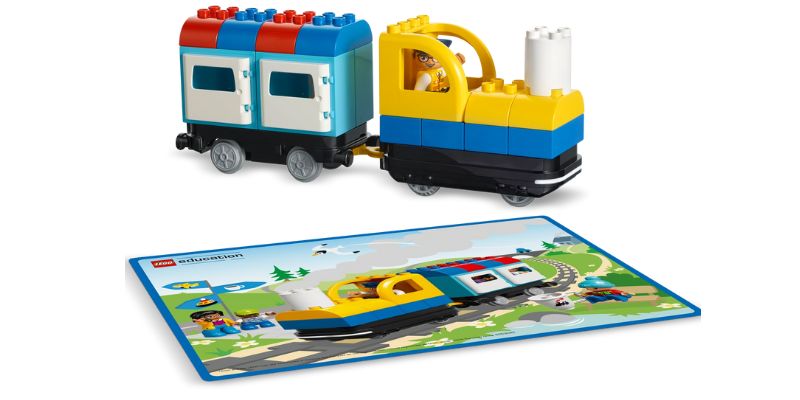
Announcing Digital Storytelling with MatataStudio
Digital storytelling is a modern way for children to express their creativity by combining narratives with technology. Through coding, kids can bring their stories to life by creating interactive animations, games, and life lessons. With tools like MatataStudio and MatataBot, students are exposed to STEM learning methodologies in a fun and hands-on way. Continue reading the Blog to explore how MatataStudio helps children use coding to develop different plots and scenes that culminate into an interesting tale.
What is Digital Storytelling?
Digital storytelling involves using digital tools. Unlike traditional methods, where a story is told through words or pictures, digital storytelling can be conceptualized from scratch – using coding techniques.
How MatataStudio Enables Digital Storytelling
MatataStudio, paired with the friendly MatataBot, provides a playful way for young children to learn the basics of coding while creating their own stories. Designed for little learners – as young as kindergarten age, MatataStudio uses physical Coding Blocks that allow them to program MatataBot. By arranging the blocks, children can control how MatataBot moves, reacts, and interacts, making it a perfect tool for curating digital stories.
Crafting Ideas with MatataBot
- Imagine a child who wants to tell a story about a journey through a Magical Forest. Using MatataStudio, they can program MatataBot to act as the main character of the story. The child can place coding blocks that direct MatataBot to move forward, turn, or interact with objects on the play mat. For example:
- Action Blocks: Use these to make MatataBot move through different destinations within the story setting; like crossing a bridge or exploring a cave.
- Music and Sound Blocks: Adding sounds to different parts of the journey makes the story more immersive. MatataBot can play cheerful tunes when finding treasure or spooky sounds when entering a dark area.
- Loop and Repeat Commands: Children can create recurring actions in their story like MatataBot repeatedly searching for hidden keys or dancing when it completes a quest.
- This hands-on way of telling stories lets children use their imagination to guide the plot, make decisions, and create different endings. They learn to think step-by-step as they plan the actions of their character and see how those actions play out.
Examples of Digital Storytelling with MatataStudio
- The Adventure of MatataBot in Space: Create a space adventure story where MatataBot becomes an astronaut exploring new planets. Using the coding blocks, they can make MatataBot move around the play mat, collect “alien samples,” and play sounds when discovering a new planet. Through this process, kids learn to structure their stories, use coding to program different actions, and add fun elements like sound effects.
- MatataBot and the Hidden Treasure: In this example, children can tell a story where MatataBot is a treasure hunter searching for a hidden gem on a desert island. By programming the robot to move in specific patterns, avoid “traps,” and unlock “hidden doors,” they practice problem-solving skills and learn how to sequence actions logically. The coding blocks allow kids to introduce elements like loops, making MatataBot search for clues repeatedly until it finds the treasure.
- The Animal Rescue Story: Children can use MatataBot to tell a story about helping animals find their way home. By coding MatataBot to navigate through different obstacles, children can design paths that lead to each animal. This encourages empathy and creativity, as kids can come up with unique ways to guide the robot while understanding the basics of coding.
Benefits of Digital Storytelling with MatataStudio
- Develops Logical Thinking: Writing code to create a digital story teaches children to think logically. They must decide which coding blocks to use, in what order, and how each action will affect the overall narrative. This process helps them understand cause and effect, sequence, and logical problem-solving.
- Promotes Communication: When children work together to create a story, they learn to communicate their ideas, listen to others, and collaborate to solve problems. It becomes a fun team-building activity where kids learn to share and build on each other’s creativity.
- Encourages Experimentation: One of the best parts of coding with MatataStudio is that it allows children to experiment freely. They can try out different story ideas, change the actions of MatataBot, and see what works best. This trial-and-error approach helps them learn from their mistakes and feel more confident about experimenting with new ideas.
MatataStudio and MatataBot open up a world of possibilities for children to explore digital storytelling through coding. By combining the logic of programming with the creativity of storytelling, children can create interactive stories that are fun, educational, and highly engaging.






Recent Comments